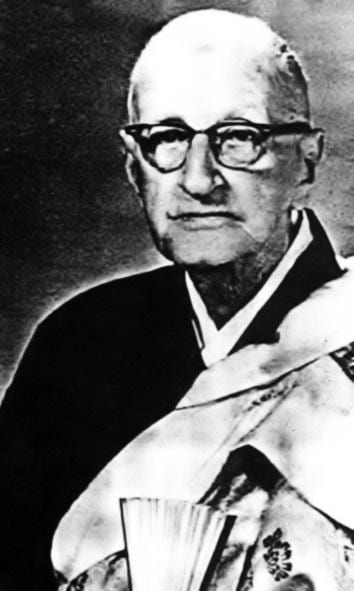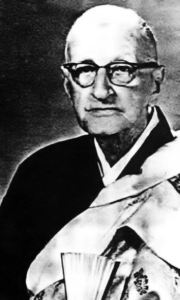Our little Talk today is dedicated to Ernest Shinkaku Hunt
(his biography below in this thread)
and other almost forgotten early pioneers of Soto Zen in the West ...

Dear All,
Please sit our Treeleaf Zazenkai for 90 minutes with Zazen, Heart Sutra and more:
10am Japan Saturday morning, NY 8pm, LA 5pm Friday night, London 1am and Paris 2am Saturday morning, or any time thereafter here:
However, "one way" live sitters are encouraged to come into the Zoom sitting, and just leave the camera and microphone turned off: Join live (with or without a camera & microphone) on Zoom at: TREELEAF Now OR at DIRECT ZOOM LINK, password (if needed): dogen
00:00 – 00:15 CEREMONY (HEART SUTRA in English) and Dedication
00:15 – 00:45 ZAZEN
00:45 – 00:55 KINHIN
00:55 – 01:25 ZAZEN
01:25 – 01:30 VERSE OF ATONEMENT & FOUR VOWS
01:30 - 01:45(?) Informal Tea Time (All Welcome)
ATTENTION: Everyone, when rising for Kinhin or Ceremonies after Zazen, get up slowly, don't rush, hold something stable, you won't be "late," so TAKE YOUR TIME! Make sure you are careful getting up!
Gassho, Jundo
SatTodayLah
PS - There is no "wrong" or "right" in Zazen ... yet here is a little explanation of the "right" times to Bow (A Koan) ...
Chant Book is here for those who wish to join in: CHANT BOOK LINK
The other video I mention on Zendo decorum is this one, from our "Always Beginners" video Series:
Sit-a-Long with Jundo: Zazen for Beginners (12) - Basic Zendo Decorum At Home
https://www.treeleaf.org/forums/show...093#post189093
https://www.treeleaf.org/forums/show...093#post189093
I also recommend a little Talk on why small rituals and procedures are so cherished in the Zendo:
SIT-A-LONG with Jundo: Small Things in the Zendo
https://www.treeleaf.org/forums/show...s-in-the-Zendo



Comment